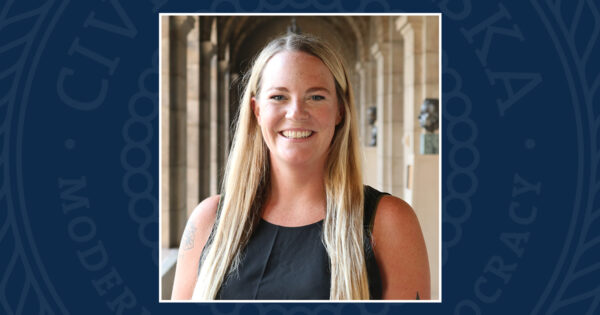It’s amazing where a tank of gas can take you. Our Civic Health team recently visited Diller, in Jefferson County on the Kansas-Nebraska border, to see how the town of 270 operates. Diller’s reputation as an active, vibrant place often precedes it.
And for good reason. After only an hour with the advisory committee of a local foundation, we were stuffed full – both by locally produced meat and cheese, and from incredible stories of success. There’s the three-day community picnic that has run for 123 consecutive years, and the 175 volunteers who run it (in a town of 270!). There’s the wave of support for the construction of a modern fire hall, recently renovated community center and restoration of the beautiful old opera house, all without outside grant dollars. There’s a vacancy-free Main Street. And, there’s the Diller Community Foundation Fund’s youth philanthropy program.

Civic Nebraska’s work in community engagement is ramping up across the state, but we’re already finding dozens of communities where the good work of civic health is as established as Diller’s 123-year-old community picnic.
Some places just “get it.” How does that happen?
There are a number of answers and hypotheses to that question, but data released last week from the Nebraska Rural Poll show that people in rural places across the state put leadership at the top of the list.
According to the poll, “over three-quarters of respondents agree or strongly agree that strong leadership will prevent their community’s decline,” and two-thirds agree that the problems their small communities face can be solved through effective leadership. More promising, most respondents are positive about their local leadership – 57 percent of those surveyed said they agree or strongly agree that “their community’s leaders are effective and do a good job.” This is welcome news, especially to those in leadership roles where the effort and tough decision-making can feel unsupported at times.
However, another point of data provides reason for more reflection: The percentage of respondents who agree that “ordinary citizens” have a great deal of power to make leadership more effective, as well as the percentage of people who feel a great deal of responsibility to do so, have both declined from 2015 to 2019.
L.J. McElravy, associate professor of youth civic leadership at the University of Nebraska and a key partner in our Rural Community Action Project, says the cause for the decline is hard to place.
“It’s not clear if there’s anything specific driving these trends,” he says. “But flooding, national or state politics, and trade disputes might all be impacting respondents’ daily lives, and rural Nebraskans have had little direct control over these aspects of life in Nebraska over the past several months.”
Generational differences also might be in play. Andy Long, executive director of the McCook-based nonprofit Cultivating Rural Leadership (and a Civic Nebraska Writers Group member) says younger generations get involved “but not necessarily in the same activities.” Generation Xers and Millennials who have moved back to rural communities may be more involved in travel-team sports and specific interests rather than traditional community organizations like the Jaycees.
Andy is quick to mention, however, that there are places that have bucked this trend and successfully engaged rural returners to local leadership.
So what’s the secret? It may start with how we think about community leadership, and the civic habits we form as a community. Here are three things we’ve heard from the road in recent months:
– “It’s something you do.” Take one of Andy’s leadership classes and you’ll quickly hear “Leadership isn’t a position you hold, it’s something you do.” Waiting to lead until you’re in a position of leadership deflects the responsibility each of us has to our community and conveniently pins it on someone else. When we see leadership as an action instead of a position, we find that anyone can serve and lead.
– “No wrong door.” For over eight years, Dawes County Joint Planning in northwest Nebraska has held the space for community members to convene, share ideas, and gain traction on projects they care about. Organizer Sandy Montogue-Roes says leaders and conveners should provide opportunities and an openness that invite others to be involved based on their interests. Citizens can be involved and engaged, not because they are prepared to do so, but because they have an opportunity to give back. There’s no wrong door to getting involved, and no wrong way to contribute to the community.
– “Make the invitation.” Maybe one of the most repeated lessons we’ve heard is to make the invitation to be involved. Like actually, go talk to and invite someone to be involved. In Potter in the Panhandle, residents’ ethic of inviting neighbors to participate started when they kept a running list of community member gifts and skills and called people based on what needed to be done. Diller invites youth to be involved through the mayor’s youth advisory council and their youth philanthropy program. Research from Lindsey Hastings, associate professor in Nebraska U.’s ag leadership, education, and communication department, suggests these direct asks are critical to people actually participating and transferring leadership from the same small circle to others.
We believe that communities are stronger when we own them and build them together. We’re energized by the towns doing the hard work of leading and inviting others to be involved. This is civic health. With persistence, these habits of engagement overcome habits of disengagement. Diller is just one example.
What’s your community’s secret to leadership? Civic Nebraska is collecting more stories and building our network of folks making positive changes in their communities. So don’t hesitate to get in touch. The car is all gassed up.
— Daniel Bennett, Rural Civic Health Program Manager




Great piece, Daniel. You illustrate the “bootstrap mentality” so often talked about in our state. Great to see examples of communities not waiting for someone to come in and do the work for them, but rather taking it on themselves. Thanks for your work!
Great article! We would love to have you come visit DeWitt!